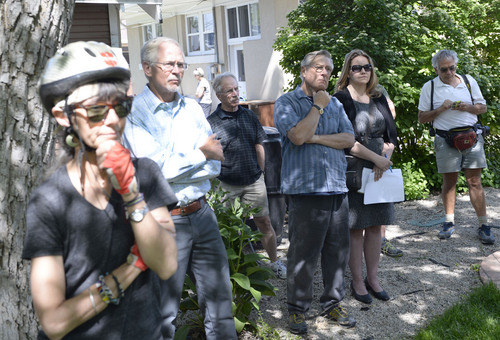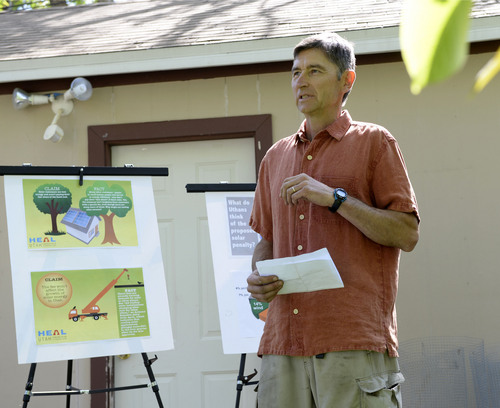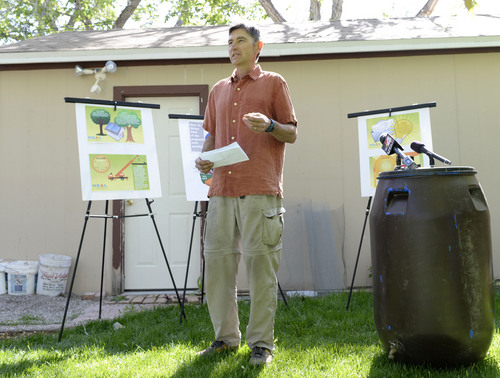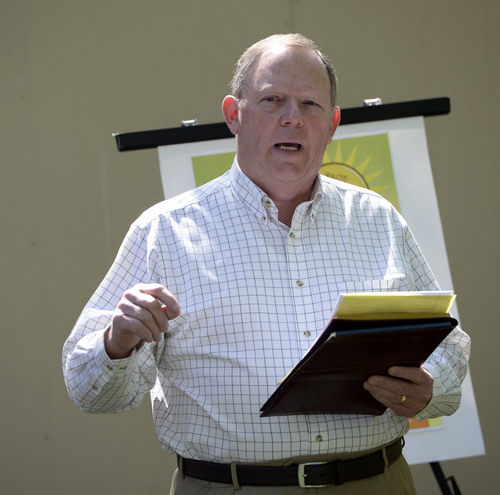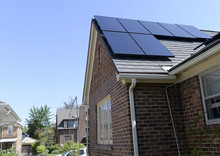This is an archived article that was published on sltrib.com in 2014, and information in the article may be outdated. It is provided only for personal research purposes and may not be reprinted.
Five years ago Jim French spent $25,000 to install 14 solar panels on the roof of his Salt Lake City home — half facing south and half facing west. More recently he added another four on the roof's west side to capture more of the sun's rays in the late afternoon — a time when electricity use spikes as utility customers crank up air conditioners and other appliances.
French's excess power is piped back into the electrical grid through net-metering equipment, effectively reducing Utah's reliance on polluting fossil fuels, he says.
If Rocky Mountain Power (RMP) gets its way, French will see $4.25 tacked onto his monthly bill — money the utility says net-metered customers should pay to cover their share of the transmission system's fixed costs.
"We want to produce clean power from the sun because it won't pollute our air, unlike much of the power generated by our coal-oriented electricity provider, Rocky Mountain Power," French said Thursday in his Yalecrest backyard. at a press event opposing the new charge
"We hope that our utility will listen to the growing number of Utahns who want less dirty power produced by burning coal and more clean power from renewable sources such as solar."
The Utah Public Service Commission is now weighing the utility's request for the "facilities charge" on net metered customers as part of a contentious rate adjustment. Currently about 2,700 RMP customers have solar arrays, but the number is growing by 30 percent a year thanks to improved and cheaper technologies and state and federal tax credits that can cut the cost by 40 to 50 percent.
RMP wants to get in front of the issue now, before the system's subsidy of them grows as more and more customers go solar, according to utility spokesman David Eskelsen. These users still require reliable electrical service when the sun's not out.
"The main benefit of net metering is to lower the bill of the user," Eskelsen said. "It doesn't contribute to system peaks. It doesn't forestall generation from power plants or supply energy to neighbors in any meaningful way. That's the reason for the proposed charge."
Net metered electricity enters the grid as demand rises, but the flow does not exactly correspond with peak electrical demand.
"The peak starts in mid-afternoon and continues into the evening long after the solar output drops off," Eskelsen said.
French and other "regular guys" have formed Utah Citizens Advocating Renewable Energy, or UCARE, to fight the "solar penalty" along with HEAL Utah, Utah Clean Energy and the Sierra Club. They insist regulators should look at the broad benefits solar-equipped homes bring to other customers and society in general — not just the burden RMP says they put on the system.
"Things like air quality are benefits the utility is not in the business of looking at. More clean energy can mitigate their carbon risk and fuel price volatility. The more renewable energy you get, you are less vulnerable to price shifts because the fuel is free," said Sophie Hayes, general counsel for Utah Clean Energy.
The groups also argue net-metered customers, by spreading out power distribution, are ensuring less wear and tear on the transmission system because the electrons they generate travel short hauls measured in feet, rather than the miles that power moves from centralized generating stations.
"It's not rattling the transformers and melting the high-tension wires," said UCARE found Mike Rossetti, who has a 24-panel array on his Draper home.
The groups contend Utah's net-metered homes not only prevent the release of 60 million pounds of carbon dioxide a year, along with other pollutants from burning coal, but also help the utility's bottom line.
"Homes with rooftop solar would help save the utility over $1.4 million dollars in avoided energy and transmission costs in one year," said Sierra Club's Utah representative Tim Wagner. "Given that the associated costs with rooftop solar installations far exceed the proposed customer charges, RMP would effectively be penalizing customers who are actually benefiting the entire system."
The Utah Office of Consumer Services and Division of Public Utilities, however, don't see it this way.
"Net metering customers are primarily providing energy for their own consumption and (incrementally) to the Company. In exchange, net metering customers are compensated at the full retail rate either through a reduction in consumption or through credits," wrote the division's energy section manager, Artie Powell, in testimony filed Thursday.
"However, these net metering customers still use the distribution and transmission infrastructure," Powell wrote, "and that makes this a cost causative issue. All customers, including net metering customers, using infrastructure should pay for that usage."


